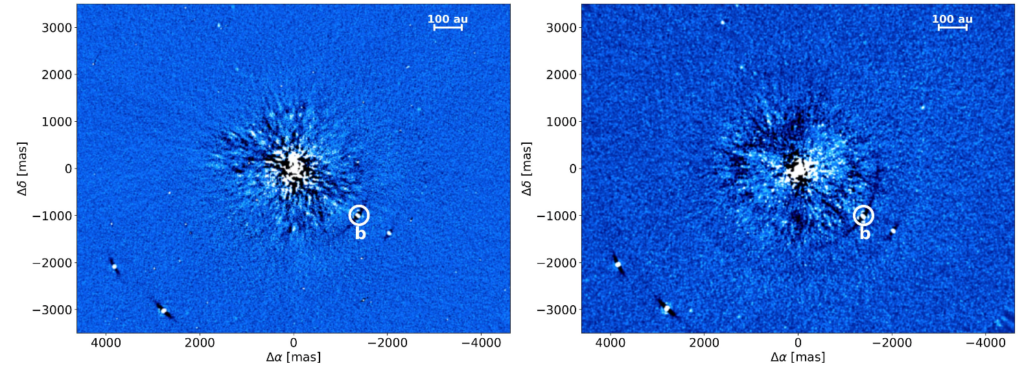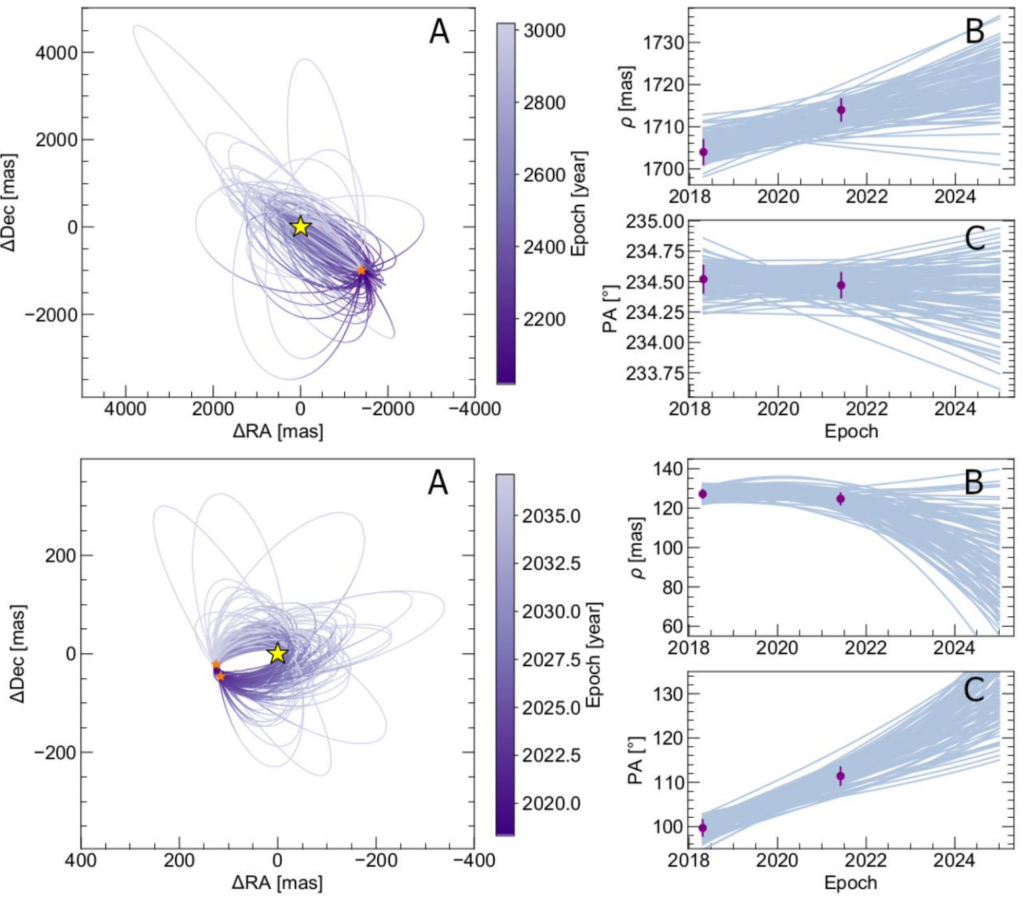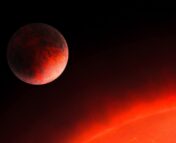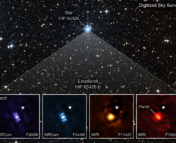Title: A Scaled-up Planetary System Around a Supernova Progenitor
Authors: V. Squicciarini, R. Gratton, M. Janson, et al.
First Author’s Institution: Department of Physics and Astronomy, University of Padova, Padova, Italy
Status: Published in Astronomy & Astrophysics [open access]
by Yiheng Chi
Yiheng Chi is a junior at Nanjing University in Nanjing, China. CYH thanks Tian-Yu Tu, Ding-Cun Chen, Yu-Fan Zhou and Hao-Tian Lan for improving and polishing the article.
Tiny Homelands
In the decades since 51 Pegasi b, the first exoplanet around a solar-type star, was discovered in 1995, thousands of exoplanets have been identified. However, the majority of the known exoplanets were discovered based on the radial velocity and transit methods, which are only sensitive to exoplanets close to their host stars. Thus, current observations on exoplanets are greatly biased. For some stars, especially those with a low mass, The formation of close-in giant planets can be explained by core accretion theory through the growth of a dust core. But things are quite different for massive stars: giant planets tend to far from their parents. The massive disk of the central massive star allows giant planets to form in a remote area through gravitational instability, while near the central star, dust for planet formation are likely to be blown away by strong stellar wind or destroyed by UV and X-ray radiation in a short time. The direct imaging is undoubtedly the best method to search for giant exoplanets in large separations.
Large Parent, Large Children
Different from previous direct imaging surveys targeting stars with spectral type no earlier than A, the B-star Exoplanet Abundance Study (BEAST) survey first aims at more massive ones. The second planetary system the survey found belongs to the massive star μ2 Scorpii (μ2 Sco). μ2 Sco, also known as HR 6252, HD 151985, or HIP 82545, is a member of Scorpius-Centaurus association about 400 light years from us. Based on the data of Gaia DR2 and photometry in from a previous study, it is considered a B2IV star with a mass of ~9 M⊙, indicating it will probably end its life as a supernova. To image the system, Its bright radiation is masked by the coronagraph to outline its faint companions, and the adaptive optics system in the SPHERE on the ESO Very Large Telescope provides high angular resolution. With two epochs of observation in 2018 and 2021 respectively, background sources visible in both epochs can be excluded through their null proper motion and others are judged according to their colors. Finally, only 2 companion candidates remain, named CC0 and CC2. The probability that these two objects are high proper motion background stars or isolated brown dwarfs are calculated and turn out to be negligible.
CC0 is located only 21 ± 1 AU from the host star and is covered by the Integral Field Spectrograph (IFS), which allows a spatially resolved spectroscopy. The authors have not completely confirmed its existence yet, as it is just on the edge of the coronagraphic mask (Figure 1). But at least, they excluded the possibility of speckles, because the separation between a speckle and μ2 Sco should be in proportion to wavelength while for CC0 it is constant. Spectral fittings of two models give the mass of CC0 18.5 ± 1.5 MJ (mass of Jupiter) and an equilibrium temperature ~900 K. The detection of CC2 is definite, and thus CC2 is also named μ2 Sco b as the first confirmed companion of μ2 Sco. Because CC2 has a separation of 290 ± 10 AU, out of the field of view of IFS, its physical parameters are estimated through its color-magnitude diagram using two bands of SPHERE’s dual-band imager IRDIS (Figure 2). The result shows a substellar object with a spectral type L0-L2. The fitting of the photometry suggests the mass of CC2 is 14.4 ± 0.8 MJ.


The high-resolution images also show the positions of CC0 and CC2 shifted ~20 mas and ~10 mas, respectively, between 2018 and 2021. The angular position of CC0 changed ~11° and the distance from CC2 to the host star, μ2 Sco, changed ~5 mas over the years. Based on the position difference, the orbital parameters of the two objects were fitted (table 1) and an MCMC chain named orbitize! was applied to predict the orbits, which are shown in Figure 4. Also, the authors showed that CC0 and CC2 share the same parent and the best-fit orbits are Hill stable (can remain dynamically stable in a long timescale) despite large eccentricities.
Planets or brown dwarfs?

Strictly speaking, CC0 and CC2 can be considered brown dwarfs rather than planets, as their masses exceed the deuterium-burning limit (M ∼13 MJ). However, the mass ratio of them to their host star (0.0015 and 0.0019) are similar to that of Jupiter to and the Sun (0.00095). Moreover, the mean irradiation of CC0 and CC2 are like Mercury and Jupiter, respectively. Thus, the μ2 Sco system appears to be a large-size Solar System. This is probably not an individual case as b Cen b, the first exoplanet BEAST discovered, is ~11 MJ around the binary system b Cen (5.5+3.5 M⊙) and the mass ratio is 0.0013. So, is the μ2 Sco system a planetary system or a multiple stellar system? Its similarity to the Solar System indicates mass is probably not the only criterion. The authors suggest that the formation pathway may be a key factor. The giant planets or brown dwarfs around a very low mass star are probably the results of turbulent fragmentation within the natal molecular cloud, which should be labeled as “star-like”. Otherwise, the system is probably “planet-like”, especially when there is evidence that companions are originated from protoplanetary disks, including a low planet-to-star mass ratio or orbits with resonance. In this case, both CC2 and b Cen b should be regarded as planets, no matter what their masses are.


A classical core-accretion scenario cannot explain the existence of CC0 and CC2, as it takes millions of years to form a giant planet, but the UV and X-ray radiation of a B star can destroy its disk in ~105 years. The gravitational instability model allows giant planets to form in wide orbits within 104 years, and then some move closer to the host star through rapid migration. This is consistent with the analysis of CC0 and CC2 that their orbits tend to have high eccentricities. However, recent updates of the core-accretion model allow CC0 and CC2 to form close to μ2 Sco and migrate to their current position later. Thus, more observations are needed in the following years to confirm the existence of CC0 and further constrain the orbits of the system.
Featured image credit: Torsten Bronger
Astrobite edited by Ali Crisp.




